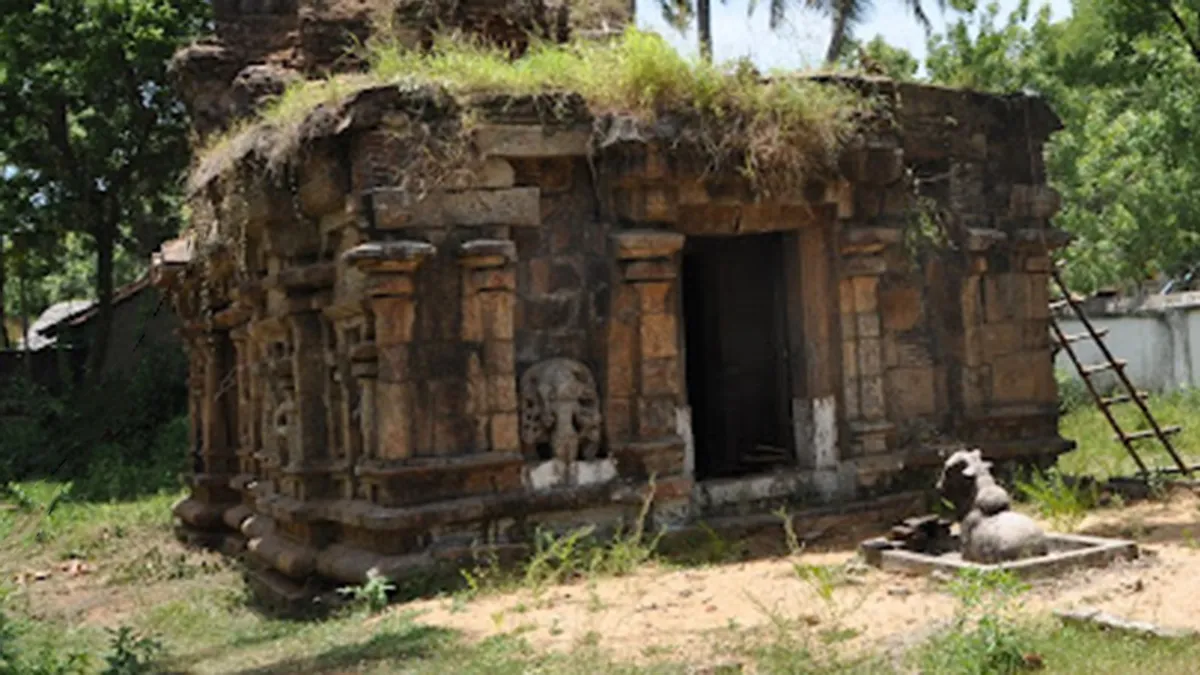Tamil Nadu Department of Archaeology to take up restoration of the 1,000-year-old Naganathaswamy Temple at Manambadi in Thanjavur district
29 Sep 2023
News
The 1,000-year-old Naganathaswamy Temple in Manambadi in the Thanjavur district is scheduled to undergo repair by the Tamil Nadu Department of Archaeology. This would be a resurrection of the Chola-era temple that was demolished in an unsuccessful rehabilitation project a few years ago. An attempt to destroy the temple in order to build a roadway had also failed earlier. The temple, constructed by Rajendra Chola I (1012–1044 CE), is a protected monument located approximately 15 kilometres from Kumbakonam. It is renowned for its fine stone carvings and significant inscriptions. Ilaichikkudi, also known as Viranarayanapuram, was a common mercantile hamlet that included Manambadi and the nearby town of Cholapuram.
The temple, known on inscriptions as Kailasamudaiyar temple, is made up of an ekatala vimana and a mukha mandapa. Both buildings' walls are separated into three bays. The vimana's centre bays include niches for Dakshinamurthi in the south, Lingodhbava in the west, and Brahma in the north. Three niches are offered on the south and north sides of the mukha mandapa. Excellent statues of Bikshatana, Adavallan, and Ganapathi are found in the south, whereas Gangadarara, Durga, and Ammaiappar are found in the north. According to R. Kalaikkovan, director of the Dr. M. Rajamanikkanar Centre for Historical Research, Tiruchi, every niche has well-carved, unique makara thoranas (ceremonial arches) with relief sculptures in the centre.
Important inscriptions from the Rajendra Chola I and Kulothunga I eras (regnum years 1070–1120 CE) can be found in the temple. From this temple, nine intriguing and instructive inscriptions have been discovered. The oldest of these, according to Dr. Kalaikkovan, dates to Rajendra Chola I's fourth reign. In order to build a flower garden with his name on it for the temple's usage, the nagaratthar of Ilaichikkudi granted land free of taxes. "However, the one that mentions Tamizh Koothu is the most peculiar. It dates back to Kulotthunga I's 18th reign and mentions a donation of land known as koothu kaani made to a certain Vikramathitthan Thirumudukunran, also known as Virudharaja Bhayakara Acharyan, for performing Tamizh Koothu five times during the temple's Chithirai festival, he said.
According to a report on the temple published by the Department of Archaeology, despite inscriptions at other temples mentioning different types of koothu, this is the only one mentioning a koothu with a Tamil name and its performance at temples in Tamil Nadu. Yet with time, the once-grand edifice started to crumble. Since the Kumbakonam-Vikravandi Road widening project was being carried out in 2013, the temple has been threatened with destruction by the National Highways Authority of India. The temple's day was spared by public outcry and protests.
The Hindu Religious and Charitable Endowments (HR&CE) Department undertook a refurbishment project that ultimately resulted in controversy. The deities were moved to a temporary shed in 2014 as part of the balalayam, a rite done before to temple reconstruction. Since the contractor lacked the necessary experience, the temple was all but destroyed. According to Thiruvadikudil Swamigal, the founder of the forum of devotees known as Jothimalai Iraipani Thirukoottam, which has been pushing for the early reconstruction of the temple, the removed stones were left strewn around. The reconstruction was put on hold when a UNESCO delegation that visited the temple voiced its displeasure with the work and urged that it be done under the supervision of professionals. Finally, representatives from Kumbakonam's HR&CE Department advised that the rehabilitation be handled by the Department of Archaeology. The Department of Archaeology will complete the remaining rehabilitation work after the Principal Commissioner of HR&CE Department, K. Manivasan, accepted this recommendation in an order dated July 12.
